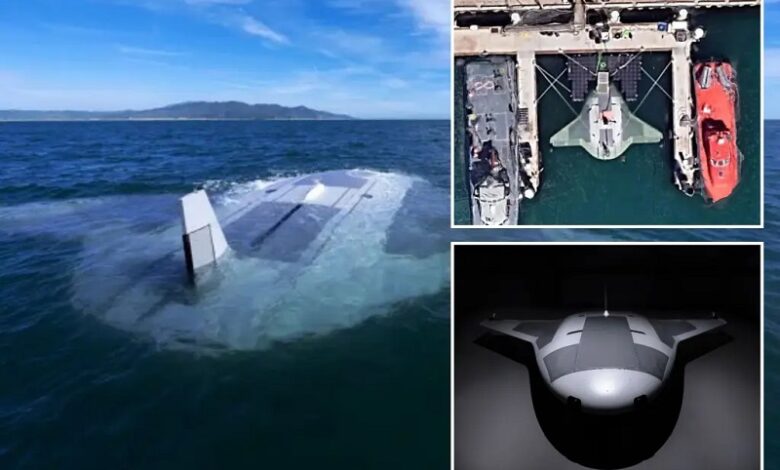Google Maps Unveils Classified US Submarine Prototype ‘Manta Ray’

News Mania Desk/ Agnibeena Ghosh/26th June 2024
Recently, Google Maps inadvertently revealed a top-secret US submarine prototype, dubbed “Manta Ray,” highlighting its stark contrast to other ships at Port Hueneme naval base in California. This classified vessel, which resembles a futuristic “Star Wars” spacecraft, was developed by Northrop Grumman and captured in satellite images.
The Manta Ray is an uncrewed underwater vehicle (UUV) that completed full-scale, in-water testing off the Southern California coast in February and March 2024. Dr. Kyle Woerner, the Manta Ray program manager at the Defense Advanced Research Projects Agency (DARPA), explained that the craft uses “efficient, buoyancy-driven gliding to move through the water.” This innovative propulsion method minimizes energy expenditure and enhances operational efficiency.
Dr. Woerner noted in a news release, “Our successful, full-scale Manta Ray testing validates the vehicle’s readiness to advance toward real-world operations after being rapidly assembled in the field from modular subsections.” The Manta Ray’s modular design allows for its disassembly and transport using standard shipping containers, eliminating the need for specialized port facilities and facilitating rapid global deployment.
Northrop Grumman transported the Manta Ray prototype from Maryland to California in subsections. This demonstrated ease of shipping and assembly supports the potential for swift deployment worldwide without congesting valuable pier space at naval bases. “Shipping the vehicle directly to its intended area of operation conserves energy that the vehicle would otherwise expend during transit,” said Woerner. Once deployed, the vehicle’s buoyancy-driven gliding enables it to navigate efficiently through the water. The craft also features several payload bays of varying sizes and types, allowing it to perform a wide array of naval missions.
Extensive testing of the Manta Ray was conducted by the US Navy off the Southern California coast for over three months. Defense analysts believe that the Navy’s investment in drone technology is a strategic move to counter the submarine operations of Russia and China.
Russia has been developing its own underwater drones and announced plans last year to acquire nearly three dozen such vessels. The Russian drone reportedly has a range of about 6,200 miles, can be armed with nuclear weapons, and can reach speeds of up to 100 knots (approximately 115 mph). This development underscores the strategic importance of advanced UUVs in modern naval warfare.
The Manta Ray’s unique capabilities and modular design represent a significant advancement in underwater drone technology. Its ability to be rapidly deployed and assembled in the field makes it a valuable asset for the US Navy. The successful testing phase marks a critical step towards integrating the Manta Ray into real-world operations, enhancing the Navy’s operational flexibility and readiness.
In conclusion, the inadvertent revelation of the Manta Ray by Google Maps has brought attention to the innovative strides being made in underwater drone technology. As global naval dynamics evolve, the development and deployment of advanced UUVs like the Manta Ray will play a crucial role in maintaining strategic advantages. The US Navy’s continued focus on drone technology reflects its commitment to addressing emerging threats and securing maritime superiority.






